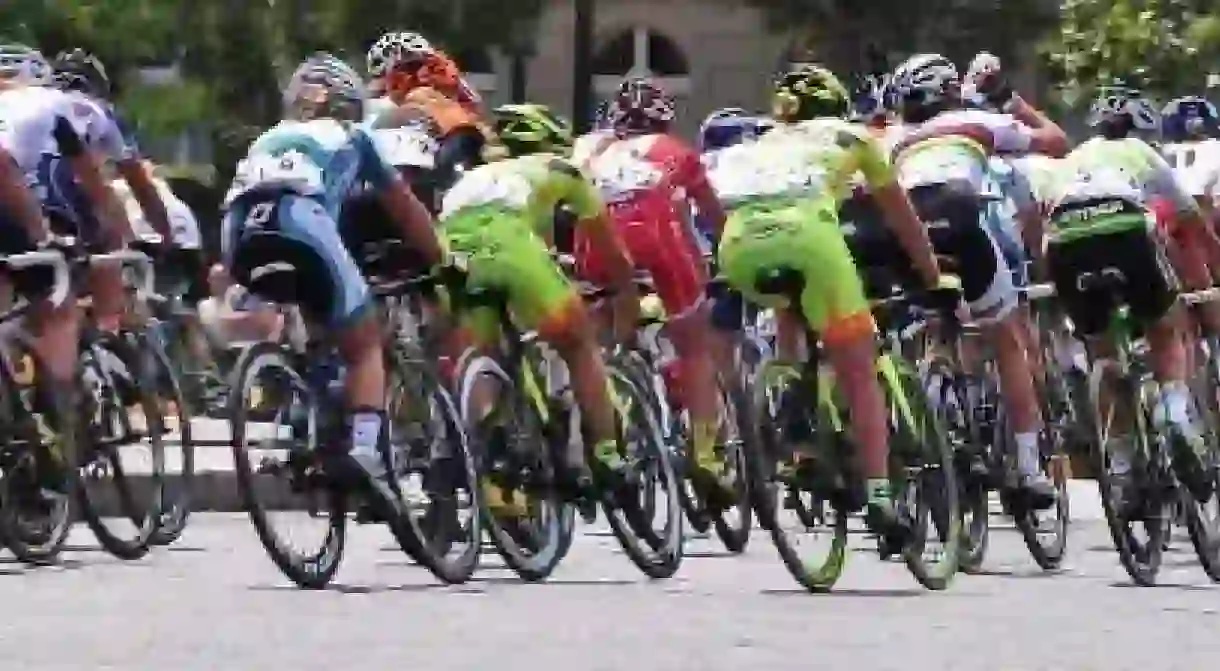Tour de France: The World's Greatest Sporting Event

Considering its global popularity, it’s hard to believe that the Tour de France started as a simple marketing stunt for a French newspaper. It began as a six-day tour organized to promote daily sports journal L’Auto (today known as L’Équipe), in hopes of helping it outsell its then-competitor Le Vélo. Featuring the longest and toughest road race of its kind at the time, the Tour became an immediate success. Sales of L’Auto skyrocketed to such an extent that Le Vélo went bust — and thus with a bang, one of the world’s greatest sporting events was born.

The Tour has run every year since 1903 except for two short breaks during the World Wars. As its popularity has grown, so has its intensity: the first Tour covered an impressive total distance of 2428 km over just six stages, whereas modern Tours cover a distance of around 3,500 km over a total of 21 stages. The diversity of its participants has also evolved from primarily French competitors to a now wholly international array of riders, all competing to take home the coveted yellow jersey.
For France, “le Tour” is an event of significant cultural importance which the nation takes great pride in hosting. In his book The Tour de France: A Cultural History, Tour historian Christopher Thompson describes it as ‘an image of a vigorous and progressive French nation’ and ‘a portrait of health’ for the people of France. The Tour’s arrival in the various cities and towns is always cause for excitement for both dedicated cycling enthusiasts and ordinary locals alike. In the earlier days of the Tour, store owners would often open their doors and allow race participants to ravage the shelves as they passed through, considering the loss of stock to be an acceptable price to pay for the massive advertising opportunity that the Tour provides.

The modern Tour commonly hosts stages outside of France, with this year’s ‘Grand Départ’ taking off Utrecht, Germany. The process choosing of the route is complex and time-consuming: every year, the race’s director Christian Prudhomme receives letters from towns all across France asking to host a stage. Prudhomme will send an undercover scout out to any promising-looking towns to scope them out and assess their ability to accommodate the caravan of thousands cyclists, mechanics, doctors, press and spectators that make up the Tour. However, a simple approval from the scout is not all it takes to host a stage. Cities and towns are known to spend vast sums of money to have the Tour pass through. The going rate for a town to host a start stage is €50,000, and a finish stage €100,000. The Grand Départ, the biggest stage of all, is the most expensive to host with some international cities such as London having paid over one million euros to host.

Despite its ever-changing route, certain recurring mountain passes (‘cols’ in French) have become famous over the years for their difficulty. The excitement of the race really builds during these climbs, as riders are pushed to their absolute limits trying to maintain their position while battling against the extreme incline of the mountains. A notable example is the Col du Tourmalet in the Pyrenees, where riders must ascend 1,395 meters over an 18.6 km course of narrow, spectator-lined roads. Even with the cheers of encouragement from the people of the Pyrenees, this climb presents a true test to the competitors who must remain focused and pace themselves to avoid falling behind. The Col du Tourmalet is considered a classic stage in the Tour and has been featured more times than any other.
Climbs are ranked according to their difficulty and are assigned a category between one and four, with one being the hardest and four being the easiest. The difficulty is calculated using a formula which takes into account the steepness and length of the climb, as well as how far into the race it appears. However, there are certain climbs which are considered to be ‘Hors Catégorie’ or ‘beyond categorization’ due to their extreme difficulty. The Col du Tourmalet is an example of one of these climbs, but it is not the only one that riders will face during this year’s particularly difficult route. By the finish line riders will have encountered a total of six ‘Hors Catégorie’ climbs: some classics, such as the Alpe d’Huez, and some which have not been visited under this category before, such as the Col de la Pierre St Martin.

When the Tour finally does reach Paris the celebrations are always spectacular. The entire city shuts down in order to accommodate the race, much to the dismay of commuters and taxi drivers. Celebrations always begin early, with some tour fanatics heading out as early as six in the morning in order to get their chance to cycle a few laps on the still-quiet Champs-Élysées. Spectators arrive soon after with the appropriate supplies to camp out for the day in the Jardin de Tuileries or on Rue de Rivoli to ensure they secure a good spot. They are entertained by live music set up on stages and by floats which pass along the route before the cyclists arrive. There are always street-vendors out in force selling Tour merchandise, including replica yellow jerseys which add to the color of this vibrant and animated day.

If you happen to be in Paris on July 26th, do not miss the opportunity to see the Tour come to the finish line. Getting to see the sweat and struggle of these supreme athletes in person as they fly past at unbelievable speeds is truly inspiring. Along with the energy and noise of the Parisian crowds, it creates an incredible experience that watching it on a screen does not even come close to. Pick up some picnic supplies, head down early, find a spot and enjoy this iconic event.













